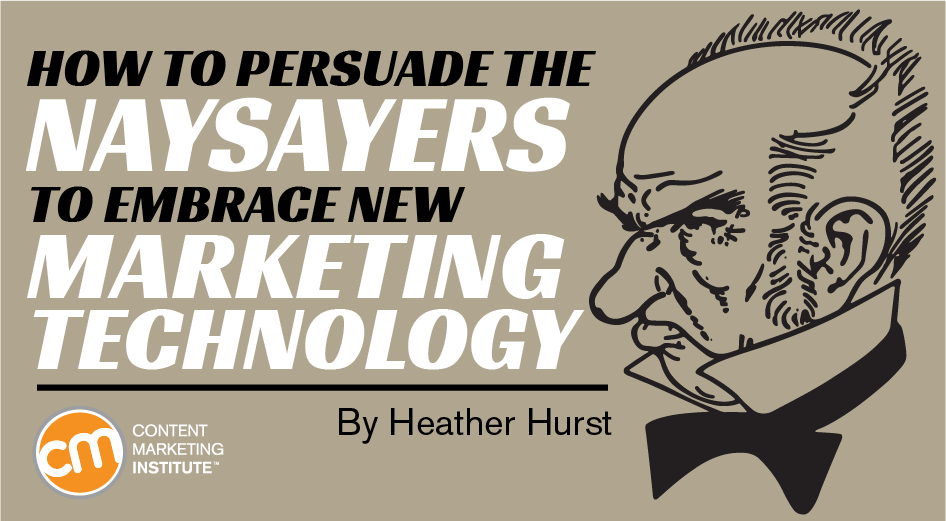Author: Heather Hurst / Source: Content Marketing Institute The world of technology solutions for marketers just keeps getting bigger. Fo

The world of technology solutions for marketers just keeps getting bigger. For proof, take a peek at the evolution of the Marketing Technology Landscape Supergraphic.

When Scott Brinker created this graphic in 2011, it featured around 150 solutions. By 2016, the graphic had exploded to include more than 3,874 solutions in 49 categories. That’s a staggering 25-fold increase in five years.
I’m not trying to put you in panic mode; I’m just trying to point out that you and your content team probably rely on more software solutions than you’re consciously aware of – and chances are high you’ll onboard new tools in the near future.
Adoption problem
I recently ran across an article in Harvard Business Review from 1985, which stated that “… there often remains a persistent and troubling gap between the inherent value of the technology … and (the) ability to put it to work effectively” and that “the distance between technical promise and genuine achievement is a matter of especially grave concern.” The goal of the article was to “describe some of the challenges managers must overcome if companies are to absorb new technologies efficiently.” These sentiments could easily have been written today.
In fact, 32 years later, Harvard Business Review is still talking about the same problem, convincing employees to use new technology:
Even among digital natives, adoption of things like enterprise digital tools often doesn’t live up to lofty expectations. ‘We’ve spent an awful lot of money on technology, but I still see people working in the old way,’ complained the CFO of a large hospitality company. The result is often widely deployed internal applications that no one actually uses effectively.
Why is this still a challenge? I believe much of it comes down to our natural resistance to change. Luckily, there are proven strategies that will immensely increase your chances of software-adoption success.
Once you’ve waded through the software bog and selected one that has the potential to make a real difference in your organization, here’s how to get your team to actually use it.
1. Address culture first
Anthony Imgrund is a project manager at FCB (Foote, Cone & Belding), a global advertising organization with more than 8,000 people in over 120 offices throughout 80 countries. He has guided 12 internal business units consisting of more than 1,100 people through the implementation of a third-party project management solution. And sometimes when a team approaches him to ask if their team can adopt the solution too, he tells them no.
Why? Because “the culture was such that they weren’t willing to do the work or make the changes that were necessary to make it successful,” Anthony says. “Why spend all that time trying to launch something if you don’t have the culture, the policy, or the process in place?”
No software, no matter the category, will be a plug-and-play miracle solution. If you have endemic problems with culture or personnel, those must be addressed either before or during the software adoption process. For example, if some individuals have a tendency to hoard or withhold information, but you’re trying to onboard a tool that will increase access and transparency, you’ll have to address their unproductive behavior. If you’re not willing to do that, your implementation will be doomed from the start.
Here are a few question themes to ask your team, perhaps in survey form, so you know what you’re dealing with before you begin:
- How comfortable are you with the status quo?
- How much do you want to enact change in this particular area?
- What is your level of pain with what the new solution will solve?
Follow up with additional questions specifically related to the solution itself.
2. Build a business case for the solution
…

COMMENTS